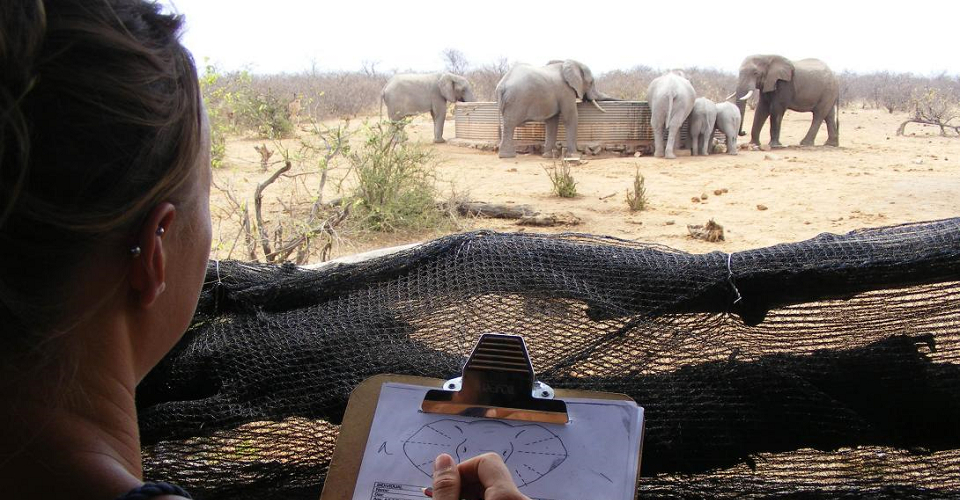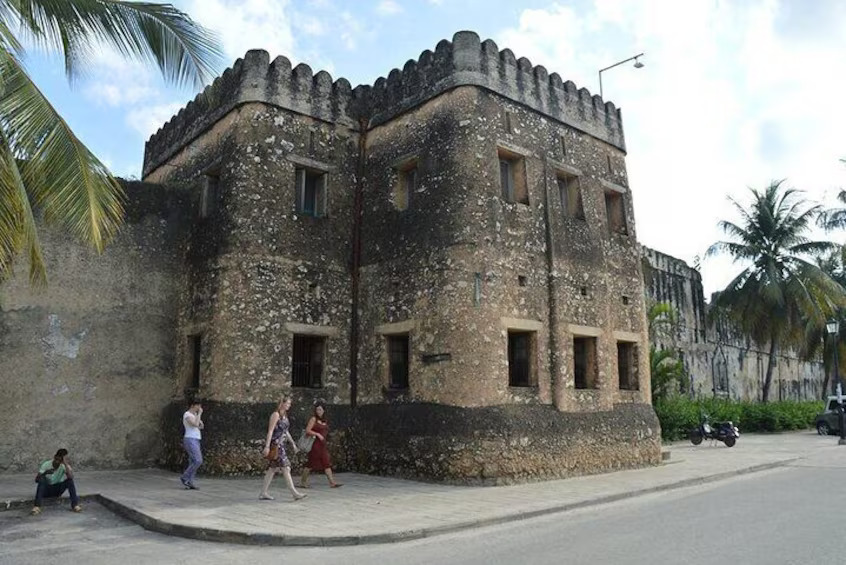
Experience Genealogy & Cultural Heritage Tourism in East Africa
Experience Genealogy & Cultural Heritage Tourism in East Africa
Cultural Heritage Tourism stands out as a rapidly expanding sector within the tourism industry. Many recognize its potential to not only preserve valuable resources but also to stimulate local economies through job creation, new enterprises, and substantial revenue. Despite its promise, there remains a notable lack of information regarding the development of heritage tourism. Questions persist about which parties should engage in it, key factors to consider, and strategies for establishing successful heritage tourism sites, initiatives, or programs.

Fort Jesus, Mombasa
Cultural heritage tourism refers to travelling primarily to delve into the culture and heritage of a destination. This can entail various activities, from admiring the historic architecture and exploring local museums showcasing artifacts, art, and literary remnants of the past, to indulging in authentic historical cuisine. Many travellers merge their passion for history with other tourist experiences such as shopping, amusement parks, and luxurious resort stays. Consequently, destinations boasting a rich heritage and well-developed tourist infrastructure catering to diverse interests tend to rank highest in popularity among tourists. These sites often encompass cultural, historical, and natural resources, forming the core of heritage tourism.
An essential aim of cultural heritage tourism is to foster collaboration with local organizations and the public to cultivate sustainable economies. Tourism not only generates employment opportunities and new businesses but also bolsters local economies. Furthermore, it safeguards natural and cultural resources, thereby enhancing the quality of life for both residents and travellers engaging with the services and attractions offered. By facilitating distinctive community opportunities, heritage tourism fosters a sense of community pride, encouraging collective efforts towards economic and cultural advancement.
Research indicates that travellers are inclined to visit destinations with robust community identities. However, the surge in visitors and the requisite infrastructure can strain the very resources that draw them in. Therefore, it is vital to safeguard these cultural heritage resources while simultaneously raising awareness about them.
Successful cultural heritage programs are built upon five fundamental principles
- Foster Collaboration for Sustainability: Recognize that tourism involves the participation of various stakeholders. Establish partnerships to broaden support and increase the likelihood of success. Package local sites and events into a cohesive visitor experience and engage in cross-promotion with other attractions to maximize exposure.
- Align Community Values with Tourism: Educate the community about the significance of heritage tourism and historic preservation. A community that values and actively preserves its heritage is more likely to contribute funds, volunteer efforts, and political support to project development.
- Bring Sites to Life through Interpretation: Every destination has a story to tell. Utilize creative interpretation methods to convey the unique cultural sites, traditions, events, and personalities that define your community or region. Ensure inclusivity by sensitively presenting the contributions of all groups to the local heritage.
- Emphasize Authenticity and Quality: The historical and cultural contributions of previous generations are what set a community apart and attract visitors. Maintain accuracy and high standards when sharing these contributions with visitors to enhance authenticity and appeal.
- Preserve and Protect Resources: Plan for the preservation and protection of significant places, sites, and traditions that draw visitors. Cultivate a strong preservation ethic and adhere to all relevant local, state, and county by-laws in the planning and preservation of historic sites.
Factors to Weigh in Heritage Tourism Development
When contemplating heritage tourism development, it’s crucial for sites and communities to be mindful of the associated challenges, which may encompass:
- Strain on Local Resources: Increased visitor numbers can exert pressure on local resources, potentially leading to the deterioration of heritage sites.
- Conflict with Resident Needs: The demands of heritage tourism may clash with the requirements of local residents for public services and facilities.
- Financial Obligations: Establishing and maintaining heritage tourism initiatives entail both operational and capital costs, which must be carefully considered.
- Community Opposition: In certain areas, tensions may arise between the objectives of heritage tourism and the broader community goals, fostering opposition within the community.
- Seasonal Nature: Heritage tourism often experiences fluctuations in visitor numbers throughout the year, presenting challenges related to seasonality and revenue stability.
Inventories
When embarking on heritage tourism development, it’s essential to commence with a thorough assessment of assets, encompassing both existing attractions and those ripe for development. Historical and physical inventories play a pivotal role in characterizing sites and activities, addressing fundamental questions such as “Where have we been?” and “Where are we now?” These inquiries naturally lead to the overarching question crucial to all planning endeavours: “Where do we go from here?”
Research serves as a vital tool in identifying the overarching theme of a heritage tourism program, representing a step in the process that cannot be overlooked. It is imperative to first identify existing assets before they can be effectively preserved and promoted.
Historical inventories should elucidate
- The historical context of the site at specific points in time.
- Ownership patterns and changes over the years.
- Significance of the site or ownership during various periods.
- Factors contributing to the present-day appearance of the site.
- Use limitations and inherent constraints of the site.
Physical inventories should encompass
- Geographic locations of sites and activities within the community.
- Range of resources and attractions available at individual sites.
- Condition of on-site facilities.
- Identified needs requiring attention at the sites.
Tips for Visiting Heritage Tourism Destinations
- Conduct Ancestry Research Before You Go
While not obligatory, many travellers kickstart their ancestry tourism journeys by delving into DNA tests like Ancestry DNA or 23andMe. Alternatively, tapping into family members’ knowledge and memories can unravel significant clues, leading to further research in museums and libraries. Utilize these stories to plan your trip accordingly.
- Compile a List of Destinations and Sites
Researching and organizing a trip centered around ancestry or genealogy can be daunting given the wealth of information available. Once you’ve gathered sufficient data, pinpoint the key destinations and sites you wish to explore. Particularly for diaspora tourism, spanning continents and countries, prioritize your list based on personal significance. While visiting every location may be ideal, focus on the top two places that resonate with you the most initially.
- Support Locally-led and Owned Organizations
Prioritize travelling to support local communities, especially in heritage tourism. Local residents possess unparalleled knowledge of their history, making them invaluable resources for insights and guidance. Seek out and support locally-led and owned organizations within the heritage tourism industry, integrating them into your research and planning process for invaluable expertise.
- Acknowledge Emotional Overwhelm
Reconnecting with your history can evoke a myriad of emotions, ranging from excitement to sorrow. Be prepared for fluctuations in your emotional state as you uncover ancestral narratives. For diaspora tourism, learning about the hardships endured by your ancestors may be particularly challenging. Plan your itinerary thoughtfully, spacing out emotionally heavy attractions such as concentration camps or former slave houses to mitigate overwhelming feelings.
- Embrace Potential Discrepancies in Impact
Acknowledge that the experience may not evoke the anticipated emotional response. Sometimes, our expectations overshadow the reality of the situation. It’s normal if the connection to a destination doesn’t resonate as profoundly as expected. Managing expectations is crucial, recognizing that the significance of the experience may manifest later, unexpectedly. Allow yourself the space to process and reflect on the journey in due time.
Discover more about heritage tourism examples and Kenya’s seven UNESCO World Heritage Sites through the following resources. Explore these significant sites that showcase Kenya’s remarkable beauty, rich culture, and diverse natural wonders…
Beyond the renowned “big five” game animals …..
Kenya boasts breathtaking beauty that promises a truly unforgettable experience. With seven UNESCO World Heritage sites, the country ranks second only to South Africa, which has ten such sites, in terms of the number of listed sites in Africa.
- Fort Jesus in Mombasa: A Testament to Architectural Brilliance
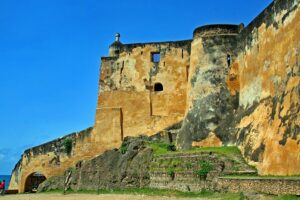
Fort Jesus Museum
Constructed by the Portuguese in the late 16th century, Fort Jesus stands proudly at the southern edge of Mombasa atop a coral rock spur. Serving as a symbol of Western dominance over the Indian Ocean trade routes, it remained under Portuguese control for a century. Designed by Giovanni Battista Cairati and built between 1593 and 1596, the fort is an outstanding example of 16th-century Portuguese military architecture, reflecting Renaissance principles of harmony and proportionality. Spread over 2.36 hectares, the property includes the fort’s moat and surrounding area.
Fort Jesus, Mombasa, embodies the exchange of cultural influences among African, Arab, Turkish, Persian, and European communities. Its enduring significance is evident in the struggle for control over the pivotal port of Mombasa, leaving lasting traces on its structures and adaptations.
The Fort Jesus Museum, located within the fortress, showcases a plethora of artifacts from archaeological excavations conducted not only at Fort Jesus but also at sites like Gede, Manda, and Ungwana.
- Thimlich Ohinga Archaeological Site
Thimlich Ohinga, meaning “frightening dense forest” in the Dholuo language of the Nilotic group in the area, boasts stone structure enclosures with walls ranging from 1.0 to 4.2 meters high. Built by communities, archaeological evidence suggests materials on-site are over 500 years old. Initially constructed by Bantu communities before the arrival of the present-day Luo inhabitants, the abundant rocky terrain provided ample resources. Subsequent migrations between the 15th and 19th centuries saw repair and modification efforts that remarkably preserved the structures’ architecture.
- Lake Turkana National Parks
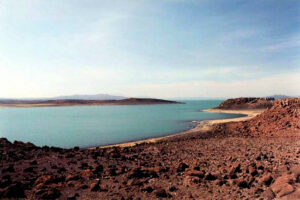
Lake Turkana National Park
As the most saline among East Africa’s expansive lakes, Turkana stands as an exceptional laboratory for the examination of various plant and animal species. The trio of National Parks situated around its shores serve as vital resting places for migratory waterfowl and as crucial breeding grounds for the Nile crocodile, hippopotamus, and a diverse array of venomous snakes. Notably, the Koobi Fora deposits, renowned for their abundance of mammalian, molluscan, and other fossil remains, have significantly advanced the comprehension of paleo-environments, surpassing any other site on the continent in this regard. Recognizing their unparalleled ecological significance, the Lake Turkana National Parks earned a place on the World Heritage List in 1997 and are presently managed jointly by the Kenya Wildlife Services (KWS) and the National Museums of Kenya (NMK).
- Lamu Old Town
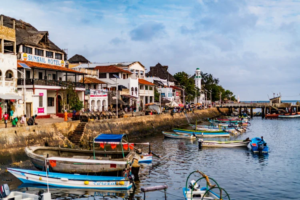
Lamu Old Town
Lamu Old Town stands as the oldest and most well-preserved Swahili settlement in East Africa, still retaining its traditional functions to this day. Constructed primarily from coral stone and mangrove timber, the town’s architecture is distinguished by its simple structural forms, complemented by inner courtyards, verandas, and intricately carved wooden doors. Since the 19th century, Lamu has been a prominent host for major Muslim religious festivals, solidifying its position as a significant hub for the exploration of Islamic and Swahili cultures. Recognizing its cultural significance, Lamu Old Town was officially designated on 20/6/1986 and later inscribed onto the UNESCO World Heritage Sites list in 2001.
Lamu boasts of several historic sites, including the German Post Office, the Lamu Museum, and the Lamu Fort.
- The Kenya Lake System in the Great Rift Valley

Lake Nakuru National Park
The Kenya Lake System in the Great Rift Valley earned its place on the UNESCO World Heritage Sites list in 2011. This natural marvel boasts exceptional beauty, encompassing three interconnected, shallow lakes: Lake Bogoria, Lake Nakuru, and Lake Elementaita, spanning a total area of 32,034 hectares. Despite their relatively modest size, these lakes harbour some of the world’s most remarkable diversities and concentrations of bird species. Their management is a collaborative effort between the Kenya Wildlife Services (KWS) and the National Museums of Kenya (NMK).
Within these lakes reside 13 globally threatened bird species alongside some of the highest bird diversities globally. Notably, the area serves as the primary foraging site for the lesser flamingo and serves as a vital nesting and breeding ground for great white pelicans.
- Mount Kenya National Park and Forest
Mount Kenya, with its rugged glacier-clad summits and forested slopes, is a stunning landscape in East Africa. Established in 1949, Mount Kenya National Park and Forest gained UNESCO World Heritage Site status in 1997. Managed jointly by the Kenya Wildlife Service (KWS) and the National Museums of Kenya (NMK), its primary goal is to protect the mountain, its diverse wildlife, and its pristine environment. As the second-highest peak in Africa, Mount Kenya is located approximately 193 km northeast of Nairobi and 480 km from the Kenyan coast, standing at 5,199 meters tall. It serves as a crucial water catchment area and habitat for numerous animal species. Additionally, it is recognized as a UNESCO Biosphere Reserve. The area’s afro-alpine flora provides valuable insights into ecological processes, studied by researchers from NMK. Mount Kenya also lies along the traditional migration route of African elephant populations, highlighting its importance in the broader ecological landscape.
- The Sacred Mijikenda Kaya Forests
The Mijikenda Kaya Forests, consisting of 11 forest sites spanning about 200 km along the Kenyan coast, house the remains of fortified villages known as kayas. Created in the 16th century and abandoned by the 1940s, these kayas are now revered as ancestral abodes and sacred sites, maintained by councils of elders. Inscribed as UNESCO World Heritage Sites in 2008, these forests are overseen by the Coastal Forest Conservation unit (CFCu), established by NMK to ensure their preservation.
These kayas, spread across approximately 200 km of coastal Kenya, represent more than thirty surviving sites, mostly situated on low hills and ranging in size from 30 to 300 hectares. While they began to decline in use in the early 20th century, they remain significant as repositories of Mijikenda spiritual beliefs and the sacred dwelling places of their ancestors. Nurtured by the Mijikenda community, the forests surrounding the kayas serve to protect the sacred graves and groves, representing the last vestiges of the once extensive coastal lowland forest.
- Stone Town of Zanzibar

Stone Town Zanzibar
Stone Town, located on the western side of Unguja Island, Zanzibar, is a prime example of a historic Swahili trading town. Influenced by Arab, Indian, and European cultures, it has preserved its indigenous essence to create a unique urban cultural landscape.
The town features significant 18th and 19th-century structures, including the Old Fort, the House of Wonders, and the Old Dispensary. Notable religious sites include St. Joseph’s Roman Catholic Cathedral and Christ Church Anglican Cathedral, built on the last slave market and honouring David Livingstone’s efforts to end the slave trade. Other key landmarks include the former residence of slave trader Tippu Tip, Malindi Bamnara Mosque, and the Jamat Khan for the Ismaili sect.
Stone Town’s distinctive winding streets, grand seafront mansions, and open spaces reflect the town’s long history of trade between Africa and Asia. Additionally, it is significant for being the site where the slave trade was ultimately abolished.
If you’re seeking to travel abroad to reconnect with your roots or embark on a cultural heritage tour in East Africa, Inclusive Holidays Africa is delighted to customize an itinerary to meet your specific preferences.

